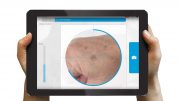How would you describe what an ‘Engaged Patient’ is or what they do? Through accessibility, regular communications, and personal discipline, engaged patients may come in for their annual exams and those with a chronic disease regularly take their prescribed medications. But many more feel reluctant to contact their GP with health concerns or aren’t in the habit of taking prescribed medicine when they should – non-adherence to prescription medicine is estimated to cost the NHS almost £300M per annum. It’s no secret that better engaging with such patients can improve their health outcomes, as well as their healthcare experience. But this is not so easily done, especially as the need for remote patient care increases and aging populations give rise to more chronic illnesses.
The pandemic forced the rapid and sudden adoption of digital solutions in healthcare, such as video GP consultations on smart devices and SMS texts telling you to book a vaccination. Whilst these have been vital, many were hastily put in place due to the rapidly shifting circumstances, and often relied on siloed and outdated legacy technology. They were just short-term fixes with no long-term sustainable value, but their use has served to shine a valuable spotlight on patient healthcare communications. Healthcare teams are now more aware of what could be possible if all the siloed pieces of technology worked together in an integrated and holistic way.
Treat your patients like a customer when it comes to health communications
Communications technology, considered cutting-edge and necessary in other vertical service industries some years ago, is still being planned or in the initial stages of deployment in many healthcare practices. Depending on a traditional calling-centric communication model is potentially holding healthcare organisations back from the abundant benefits of digital communication services such as virtual care systems (telehealth/telemedicine) delivered via cloud-based software-as-a-service (SaaS) applications that can be accessed from smartphones or tablets. These solutions can help increase patient engagement levels, directly contributing to improving their overall health and outcomes.
The key is to think of patients as a healthcare organisation’s customers. Like every modern customer, they want to be able to connect and engage with their healthcare providers in the same way that they connect with people, businesses, and services in their personal lives – in whichever way they want and in the moment. We’ve found in other service verticals that this level of customer-centric engagement and accessibility is best delivered through digital communication services such as CCaaS (contact centre-as-a-service) capabilities. CCaaS solutions bring together channels of engagement such as voice, video, chat, email, SMS, collaboration, social media, even elements such as IoT and wearables, all into a unified and, most importantly, integrated contact centre environment. From this, a healthcare organisation can design and deliver its own unique patient experience and engagement strategy.
Benefits for patients, staff, and society
Improving patient access to healthcare services through CCaaS has many benefits when it comes to efficiently running an organisation. Integration between IT systems and cloud communications can help with patient self-service, process automation, and patient enablement. All these will reduce the workload for administrative and clinical staff who are having to spend too much time dealing with time-demanding administrative task on patient records, schedules, prescriptions, referrals, etc. Instead, they can attend to more important and urgent matters. What’s more, if communications and information sharing are personalised to each patient, they feel more individually catered for and uniquely valued, thus improving the chances of effective engagement. Digital solutions can provide the pivotal level of personalisation at scale, which today’s overburdened healthcare staff simply don’t have the bandwidth to create.
Finally, illnesses caused by lifestyle – otherwise known as chronic illnesses – are putting a huge strain on healthcare systems worldwide. By 2030, the proportion of total global deaths due to chronic diseases is expected to increase to 70% according to the United Nations. Integrations between IT systems, communications solutions and wearable devices can make a critical difference, which matters because as our population ages we become more susceptible to these sorts of illnesses, increasing the burden on our already under-pressure healthcare systems. Digitalised and automated solutions can be used to devise and deliver personalised, individually tailored communications to help manage and prevent such chronic illnesses. Patients who become more aware and engaged through digital communications, could see an increase in proactive engagement with their healthcare plan or associated medications and a reduced necessity to go to their Primary or Acute Healthcare service to deal with the impact of such chronic illnesses and therefore avoid further readmissions.
So, what should a healthcare provider look for in a modern cloud communication and customer engagement solution? Here are four vital components to consider as a starting point:
1. A unified communications platform
A unified communications and patient engagement platform in the cloud provides seamless connections across multiple modes of communication (voice, SMS, messaging, chatbots, online meetings, social media, video, IoT wearables), as well as devices (desktop, mobile, and tablet). This integration means patients can use their communication channel of choice over their device of choice, while healthcare providers have access to the capabilities they need to ensure their patients can engage with a suitable person when they get in contact. Additionally, self-service capabilities such as appointment scheduling, reminders, and confirmations in the form of automated messages will help to reduce time wasting no-shows or last-minute re-arrangements for healthcare organisations.
2. Real time communications and team collaboration
Patient care requires constant and intuitive access to clinical information, usually by more than one staff member, in addition to the ability to communicate across dispersed teams efficiently and effectively, often exchanging critical healthcare information throughout care-coordination workflows. Secure, real-time collaboration across all communications channels helps staff receive support from the right people at the right time. Most critically of all, these communication services must be easy-to-use, leveraging features like Single Sign-on authentication across multiple apps and offering intuitive click-to-call or team-calling abilities that help teams collaborate easily and rapidly.
3. Follow-up Patient Engagement
Cloud-based communications solutions offer features such as automated outbound patient notifications using SMS or Chatbots, following up on patient queries, requests, or satisfaction surveys, freeing critical staff to focus on in-hospital patients and higher priority, higher quality services.
4. A Secure and Flexible Platform
We’ve often seen it in many hospitals – clinical staff laboured down with multiple phone and pager devices as well as a personal device so they can handle calls or notifications from multiple sources and on-call escalations. To avoid the increased burden and operational complexity of having to carry multiple devices like this, healthcare staff need a “one-device, multiple numbers” experience that enables them to use one device for both personal and on-call extensions as well as alarm-handling and monitoring. And lastly, a communications solution should be able to seamlessly integrate with the most common digital systems used by healthcare professionals today, including Electronic Healthcare Record systems, creating an All-In-1 intuitive experience of communications and information.
With cloud services, communication and collaboration can become integrated into one solution that works the way patients and providers work — across any device, anytime, anywhere. Most importantly, the flexibility of cloud communications — particularly when it comes to solutions with open platforms — means providers can add new capabilities in minutes, with almost immediate access to the latest innovations. Learn more about the benefits of integrating healthcare IT systems with digital unified communications from a solutions provider that has extensive experience of working with electronic health record (EHR) vendors.
by Dave O’Shaughnessy, Healthcare Practice Leader – Avaya International





